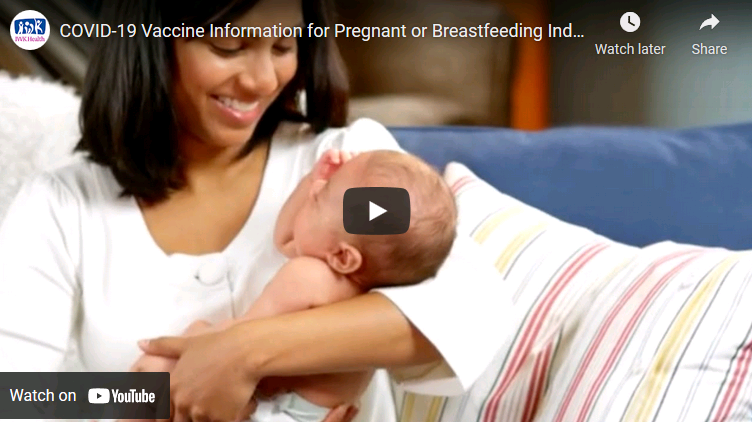Labour is a dynamic process, with each birthing person experiencing the pain of labour differently. Effective pain management involves understanding the range of available strategies and choosing the options that best support comfort, control, confidence, and enhance coping throughout each stage of labour. This infographic outlines both non-pharmacologic and pharmacologic pain management techniques—highlighting practical, evidence-informed methods that can be used alone or in combination. By exploring these approaches, labouring individuals, care providers, and support persons can make informed decisions that align with personal preferences, clinical needs, and support the progression of labour.
Clinical Practice Resources
|
|
|
Skin to Skin Care in the Operating Room A video of skin to skin practice in the operating room was created in collaboration with care providers from the IWK and the Reproductive Care Program of NS. The goal of the video is to promote and support skin-to-skin contact (SSC) practices. There is strong evidence to support the many benefits of skin-to-skin contact for both the gestational parent and newborn. This video provides a step-by-step guide to safely facilitate SSC in the operating room during a cesarean birth. We hope this video will be helpful to you as you promote SSC practices in the operating room at your birthing facility. https://www.youtube.com/watch?v=ULclYsTW96A
Skin to Skin Care Study The power point and video found at the link below provide a graphic description of key findings from the Nova Scotia Infancy Skin-to-Skin Contact Study and its 9-Year Follow-up Study. The principle investigator of the study is Ann Bigelow, Psychology Department, St. Francis Xavier University along with a number of her colleagues. The video describes skin-to-skin contact with infants for parents and parents-to-be. Short- and long-term findings from the Nova Scotia research study of mother-infant skin-to-skin contact are presented. |
|
The Nova Scotia Vaccine Expert Panel has updated resources for care providers to use with pregnant and breastfeeding individuals to guide discussion about COVID-19 vaccination. This information is specific to adult immunization. In addition to these documents, the IWK has produced a video to help individuals make an informed choice about whether to get the COVID vaccine while they are pregnant, trying to get pregnant or breastfeeding. The video is hosted on the IWK public website: https://www.iwk.nshealth.ca/COVID-19/vaccine-info-for-pregnant-or-breastfeeding For more resources related to the care of pregnant patients and their newborns affected by COVID-19, please refer to our COVID-19 Resources page. |
|
This guideline presents care and investigative options for childbearing persons (and their relatives) who experience intrauterine fetal demise (IUFD) or stillbirth. Material is grouped into standard and selective investigations classified by pregnancy timing and type of investigation: childbearing person (maternal), fetal/infant, or placental. The process for individual and family informed decision-making is outlined. According to the Nova Scotia Atlee Perinatal Database (2020), the provincial stillbirth rate has remained virtually unchanged since 1988. |
Syphilis and Screening in NS for Pregnant Persons and NewbornsThe rate of syphilis in Canada has been steadily rising in recent years, becoming a significant public health concern. A surge in syphilis infection among women of childbearing age has led to more cases of congenital syphilis (transmission from the pregnant person to the fetus during pregnancy), which can result in severe health outcomes or death in newborns. An infographic created by the Public Health Agency of Canada provides a visual aid depicting the increase in syphilis rates in Canada. Cases of syphilis in pregnancy and confirmed cases of syphilitic stillbirth are reportable to Public Health. The rise in cases has led to national research exploring strategies to address infectious and congenital syphilis in Canada. ScreeningScreening recommendations for syphilis during the antenatal and postpartum periods, and for newborns are provided below. These recommendations have been in place since 2020, were adapted from national guidelines, and remain in place until further notice. See the letter to care providers from January 2020 for additional practice guidance regarding consultation, testing and treatment.
Nova Scotia Department of Health and Wellness Syphilis Surveillance GuidelinesThe Nova Scotia Department of Health and Wellness have updated the Syphilis Surveillance Guidelines and they are now available. The update comprises the addition of new stages for congenital syphilis, including late congenital syphilis and syphilitic stillbirth. Surveillance Guidelines for congenital syphilis and non-congenital syphilis have been separated into two documents, both of which also contain guidelines for identifying syphilis outbreaks. For more information please access the Syphilis section of the Communicable Disease Manual that is accessible on the Nova Scotia Department of Health and Wellness website. Provincial Syphilis Outbreak: Recommendations for pregnant persons and newbornsAs of January 20, 2020, the Office of the Chief Medical Officer of Health for Nova Scotia has declared a provincial syphilis outbreak. Across Canada syphilis outbreaks have been declared in most provinces/territories, due to increasing rates of infection. Changes to recommendations for pregnant women and newborns are outlined in the documents below: |
|
The Canadian Paediatric Society (CPS) has recommended moving from universal newborn ocular prophylaxis, to universal prenatal screening for Neisseriae gonorrhoeae (GC) and Chlamydia trachomatis (CT) and treatment of those with positive results in order to eradicate infection and prevent intrapartum transmission to the newborn. As universal ocular prophylaxis is eliminated from routine newborn care, functions of the health system must be optimized and synchronized to prevent ON. RCP has partnered with clinical experts and stakeholders from across NS to produce these resources, which are designed to offer guidance for the prevention of ON: |
|
RCP has created this clinical resource to guide health professionals’ use of medication to alleviate pain in the labour and birth setting. It includes a review of the dimensions of pain and how they contribute to the labour experience, and differentiating between pain and suffering. Pharmacological options described in this resource include opioids (morphine, hydromorphone, and fentanyl) as well as nitrous oxide. This resource is to be used in conjuction with the content in RCP’s two-part education module Supportive Care in Labour Because of the potential for adverse effects, particularly related to IV Fentanyl use, Registered Nurses, midwives, and physicians must demonstrate competency in its safe administration. Special considerations for the use of Fentanyl have been revised and clarified. RCP acknowledges that all policies and procedures are approved by the appropriate processes within each facility in Nova Scotia, or across the Nova Scotia Health Authority. Practice may differ across facilities, depending on available resources and prescriber preference; however, RCP recommends that the content of this clinical resource be considered in revisions to policy, procedures, and practice to ensure optimal safety and competence. |
|
The aim of this practice resources is to provide guidance for providing antibiotics for GBS prophylaxis and with preterm prelabour rupture of membranes. The document combines recommendations from SOGC Clinical Practice Guideline No.233 – Antibiotic Therapy in Preterm Premature Rupture of the Membranes (Reaffirmed September 2017), and No.298 – The Prevention of Early-Onset Neonatal Group B Streptococcal Disease (Reaffirmed August 2018). The SOGC guidelines reflect the available evidence and professional opinion at the time of publication and are subject to change. Amendments made to the SOGC guidelines at a local level should be well documented to illustrate the basis for clinical decision-making in the course of care. |
|
RCP is revising the comprehensive clinical resource: Working with Pain in Labour. In the meantime, we are providing the attached table of recommended dosages for commonly used medications. For further information, including references, consult our clinical resource Working with Pain in Labour: Systemic Medications and our two-part education module Supportive Care in Labour |
|
From April 2007 to January 2009, the Reproductive Care Program of Nova Scotia conducted a series of quality assessment reviews on induction of labour in 3 District Health Authorities and at the IWK Health Centre. This report summarizes findings from these reviews and from the literature. Data from the Nova Scotia Atlee Perinatal Database is presented. |
|
Between 1970 and 2006 the cesarean section rate in Canada more than quadrupled from 6% to 26%. Similar increases have occurred in every province, including Nova Scotia where the cesarean section rate in 2006 was 27%. As part of an effort to understand the reasons for increased interventions in childbirth in our province, the Reproductive Care Program of Nova Scotia conducted quality assessment reviews in four different centres. This report outlines the collective findings from these reviews, describes the factors that appear to support best practices in maternity care with respect to cesarean sections in Nova Scotia, and presents recommendations for local and provincial action. |
|
Typically, staff and physicians who work in the Emergency or Outpatient department do not deliver babies as part of their usual practice. This document has been developed to support these health care professionals. It is intended to provide guidance and support to safely and effectively assess and care for labouring/birthing persons. Included are guidelines for:
|




